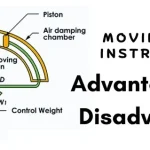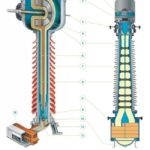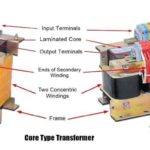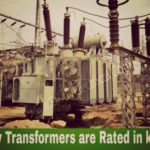Transformers are static electrical devices that transfer electrical energy between two or more circuits through electromagnetic induction. They play a crucial role in the generation, transmission, and distribution of electrical power. This article explores the key advantages and disadvantages of transformers, providing deep insights suitable for both electrical engineering students and professionals.
Advantages of Transformers
Transformers have revolutionized the way we use and distribute electrical energy. Below are the significant advantages:
1. Voltage Regulation and Level Adjustment
Transformers step up (increase) or step down (decrease) voltage levels, making them ideal for:
- Efficient long-distance transmission by stepping up voltage to reduce I²R losses.
- Safe domestic and industrial use by stepping down voltage to usable levels.
2. High Efficiency
Transformers are known for their high efficiency, often exceeding 98% in power transformers.
Efficiency (η) can be calculated as:
η = (Output Power / Input Power) × 100%
3. No Moving Parts
Transformers are static devices, which means they:
- Require less maintenance
- Have longer operational life
- Operate silently and reliably
4. Electrical Isolation
Transformers can isolate two circuits magnetically, providing protection from electrical faults and ensuring safety. Isolation transformers are used in sensitive medical and industrial equipment.
5. Flexibility in Design
They can be customized for a variety of applications including:
- Power transformers
- Instrument transformers (CTs and PTs)
- Distribution transformers
Disadvantages of Transformers
Despite their widespread use, transformers have some limitations:
1. Size and Weight
High-power transformers are bulky and heavy due to their core and winding materials, which limits portability and increases installation costs.
2. Losses
Although efficient, transformers still suffer from energy losses:
- Iron losses (core losses): Hysteresis and eddy current losses in the core.
- Copper losses: I²R losses in the windings.
These losses reduce efficiency and can cause heating, requiring cooling mechanisms like oil or air ventilation.
3. Cost of Copper and Iron
The materials used—especially high-grade silicon steel and copper windings—make transformers expensive, particularly when efficiency and reliability are prioritized.
4. Limited to AC
Transformers only work with alternating current (AC). They are ineffective for direct current (DC) systems unless complex conversion is used (e.g., inverter-rectifier setups).
5. Noise and Vibration
Under load, especially at high magnetic flux densities, transformers can produce audible noise due to magnetostriction in the core.
Practical Applications
- Power Transmission: Step-up transformers at power stations and step-down transformers at distribution points.
- Electronics: Used in power supplies and adapters for voltage regulation.
- Instrumentation: CTs and PTs used for accurate measurements and protection systems.
- Medical Equipment: Isolation transformers to prevent leakage currents in sensitive instruments.
Conclusion
Transformers are indispensable in modern electrical systems. Their ability to regulate voltage, provide electrical isolation, and operate efficiently makes them a backbone of power distribution. However, their limitations like size, cost, and AC-only operation must be considered when designing systems. Understanding these advantages and disadvantages of transformers is essential for every electrical engineer and student.
